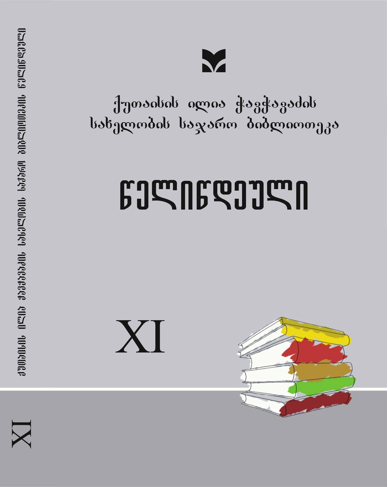ქართული წერილობითი კულტურის მოამაგენი
DOI:
https://doi.org/10.48614/yk.11.2019.190-200საკვანძო სიტყვები:
ხელნაწერი, თვენი, სახარება, ნიკოლოზ და ზაქარია მიქაძეები, კალიგრაფი, ამბროსი ნეკრესელიანოტაცია
The National Center of Manuscripts keeps four funds. The newest one, still growing Q Foundation, founded in 1929 and is filled with new materials until this time.
Due to the addition of new materials, it became necessary to prepare a description, during which significant written samples were revealed, most interesting of which is the manuscript books written by two brothers - famous calligraphers of the XVIII century - Nikoloz and Zakaria Mikadzes. They are Q-1494; Q-1502; Q-1511.
In the XVIII century, there were several prominent representatives of the Mikadze family in Tbilisi. They were brothers: Nicholas, later the dean of Zion, and Zakaria, better known as Ambrose Tsilkneli or Nekreseli.
Nikoloz Mikadze was a prominent calligrapher of the XVIII century. His earliest manuscript dates back to 1731 when he was eleven years old. 23-26-year-old Nicholas got orders of copies by representatives of the highest aristocratic and clerical ranks.
One of his newly discovered manuscripts in the center is the Gospel (Q-1511), performed in the Nuskhuri alphabet, and the other is the Homiletic-Hagiographic Collection (Q-1494), which has two dates: 1764 and 1734. Much of this manuscript is transcribed in one pen. It was no exception to his creations.
These two manuscript books and their datings are the matter of our interest. Nicholas not only wrote manuscripts but also restored obsolete pieces.
We assume that he must have copied those books in his childhood and adolescence. Then he attributed the copy works performed during his deaconry with two dates, the date when the original copy and the date of its restoration.
Nicholas's younger brother - Zacharia in secular life - later Ambrose Nekreseli was a famous clergyman, writer, and calligrapher. From 1778, he became bishop of Tsilkani, then of Manglisi and Nekresi. After the abolition of the Diocese of Nekresi in 1811, he returned to Tbilisi and died in 1812.
His copies preserved at the National Center of Manuscripts increased with one more work Q-1502, which contains the liturgical handbook of Anton›s editors and the texts of ‹Months› by Giorgi Mtatsmideli›s. These manuscripts, newly relieved at the National Center for Manuscripts, prove that book publishing was the subject of great importance in the eighteenth century.




